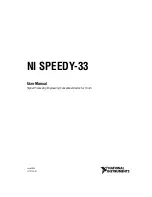
DOLBY DIGITAL PLUS
Dolby Digital Plus is the next-generation audio technology for all high-
definition programming and media. It combines the efficiency to meet
future broadcast demands with the power and flexibility to realize the full
audio potential expected in the upcoming high-definition era.
Dolby Digital Plus delivers multi-channel audio programs of up to 7.1
channels and supports multiple programs in a single encoded bitstream
with the maximum bit rate potential of up to 6 Mbps and the maximum bit
rate performance of up to 3 Mbps on HD DVD and 1.7 Mbps on Blu-ray Disc.
It outputs Dolby Digital bitstreams for playback on existing Dolby Digital
systems. Dolby Digital Plus can accurately reproduce the sound originally
intended by directors and producers.
It also features multi-channel sound with discrete channel output,
interactive mixing and streaming capability in advanced systems.
Supported by High-Definition Media Interface (HDMI), a single-cable digital
connection is possible for high-definition audio and video.
DOLBY TrueHD
Dolby TrueHD is a lossless encoding technology developed for high-
definition optical discs in the upcoming era. Dolby TrueHD delivers
tantalizing sound that is bit-for-bit identical to the studio master, unlocking
the true high-definition entertainment experience on high-definition
optical discs in the next generation. When coupled with high-definition
video, Dolby TrueHD offers an unprecedented home theater experience
with stunning sound and high-definition picture.
It supports bit rates of up to 18 Mbps and records up to 8 full-range
channels individually with 24-bit/96 kHz audio. It also features extensive
metadata including dialogue normalization and dynamic range control.
Supported by High-Definition Media Interface (HDMI), a single-cable digital
connection is possible for high-definition audio and video. HD DVD and
Blu-ray Disc standards currently limit their maximum number of audio
channels to eight, whereas Dolby Digital Plus and Dolby TrueHD support
more than eight audio channels. Note that the T 187 only supports 7.1
channel.
DOLBY DIGITAL EX
Using a Matrix decoder, this method creates the back channel (sometimes
also called the “surround center”) by means of signals on the left and
right surround channels recorded in Dolby Digital 5.1, reproduction being
provided in Surround 6.1. This method should be selected with sources
bearing the “Dolby Digital (double-D symbol)-EX” symbol, recorded in Dolby
Digital Surround EX.
With this additional channel you will experience improved dynamics and
a better sensation of movement within the sound field. If media sources
recorded in Dolby Digital EX are decoded with a Digital EX decoder,
the format is detected automatically, and the Dolby Digital EX mode is
selected. However, some media sources recorded in Dolby Digital EX can be
detected as simple Dolby Digital media sources. In this case Dolby Digital
EX should be selected manually.
NOTE
Please refer to the section ‘Listening Mode’ at the Main Menu discussions
for a description of Pro Logic, PLIIx Movie, PLIIx Music and Stereo
Downmix modes.
DTS
The Digital Theater System Digital Surround (simply called DTS) is a multi-
channel digital signal format that can process higher data rates than with Dolby
Digital. Although both Dolby Digital and DTS are 5.1 channel media formats,
discs bearing the “DTS” symbol are thought to provide better sound quality
due to the lower audio compression required. It also offers a broader dynamic,
producing magnificent sound quality.
A DTS audio input can be configured relative to its format as follows
Stereo:
If the detected audio is of DTS format, you can default it to one
of the following settings – NEO:6 Cinema, NEO:6 Music or None.
Surround:
If the detected audio is of DTS Surround format, you can
default it to one of the following settings – NEO:6 Cinema, NEO:6 Music,
Stereo Downmix or None.
None:
If ‘None’ is selected, the DTS signal will be defaulted to the ‘Stereo’
or ‘Surround’ settings set forth at the ‘PCM’ option. See discussion below
about ‘PCM’.
NOTE
Please refer to the section ‘Listening Mode’ at the Main Menu discussions
for a description of Stereo Downmix and DTS Neo:6 surround modes.
PCM
PCM (Pulse Code Modulation) is the digital representation of a standard
audio signal converted with little or no compression. If ‘None’ is selected
for any of the Dolby or DTS settings, this ‘PCM’ section will default the audio
signal as follows
Stereo:
The detected stereo audio format will be configured into one
of the following options – Pro Logic, PLIIx Movie, PLIIx Music, NEO:6
Cinema, NEO:6 Music, EARS, Enhanced Stereo or None.
Surround:
The detected surround audio format will be configured into
one of the following options –PLIIx Movie, PLIIx Music, NEO:6 Music,
NEO:6 Cinema, Stereo Downmix or None.
ANALOG
If the audio input is an analog signal, the following are the surround modes
the input can be defaulted – Pro Logic, PLIIx Movie, PLIIx Music, NEO: 6
Cinema, NEO: 6 Music, EARS, Enhanced Stereo, Analog Bypass and None.
NOTE
All these Listening Modes for ‘Dolby Digital,’ DTS’ ‘PCM and ‘Analog’ can
be directly changed by pressing the ‘Listening Mode’ button on the front
panel or through the ‘Listening Mode’ option at the Main Menu window.
The chosen audio format will be reflected back to the appropriate
setting at the ‘Listening Mode Setup.’
OPERATION
USING THE T 187 – SETUP MENU
25
ENGLISH
FR
ANÇ
AIS
ESP
AÑOL
IT
ALIANO
DEUT
SCH
NEDERL
ANDS
SVENSK
A
Р
У
С
СКИЙ
















































